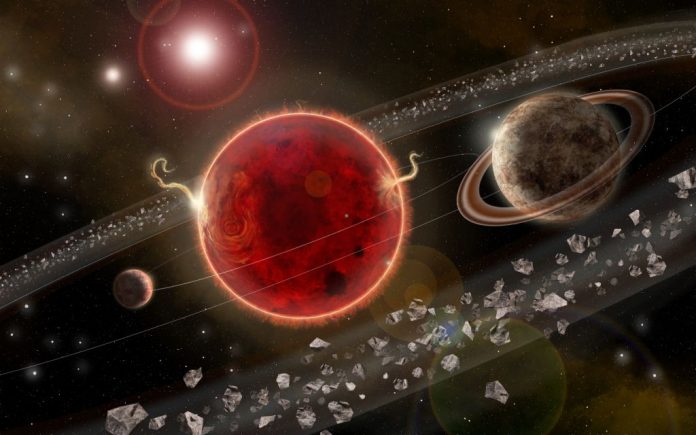Scientists have discovered another candidate exoplanet orbiting our neighbor, Proxima Centauri. A paper announcing these results was just published in the journal Science Advances. If confirmed, it will be the second exoplanet orbiting the star.
Named Proxima b, the planet has a mass close to that of Earth and orbits its star with a period of 11.2 days at an average distance of 0.05 AU. It sits within the star’s habitable zone, where liquid water could theoretically exist on the surface.
In 2017, astronomers using the Atacama Large Millimeter/submillimeter Array (ALMA) reported the existence of an unknown source at a distance of 1.6 AU in the system.
To better understand if the ALMA signal originated from another planet, Dr. Mario Damasso from the INAF-Osservatorio Astrofisico di Torino and his colleagues analyzed a 17-year-long time series of high-precision radial velocities using an exoplanet detection method that tracks a star’s light spectrum.
“If this spectrum oscillates between red and blue, it indicates that the star is moving towards and away from the Earth at regular intervals, a cycle usually caused by an orbiting body’s presence,” the astronomers explained.
“We found that the signal occurs over a 1,900-day period, suggesting it is likely unrelated to cyclical shifts in the star’s magnetic field. However, more evidence is needed to confirm this conclusion.”
The candidate planet has a minimum mass of 5.8 times that of Earth, making it a so-called super-Earth.
Dubbed Proxima c, it has an orbital period of 5.21 years and a surface temperature of minus 234 degrees Celsius (minus 389 degrees Fahrenheit).
“The proximity of the planet and its orbit at a relatively great distance from its star, means it is one of the best possible chances for direct observations that will enable detailed understanding of another planet,” said team member Professor Hugh Jones, an astrophysicist at the University of Hertfordshire.
“In the future, Proxima c might become a possible target for more direct study by the Breakthrough StarShot project, set to be humankind’s first attempt to travel to another star system.”















